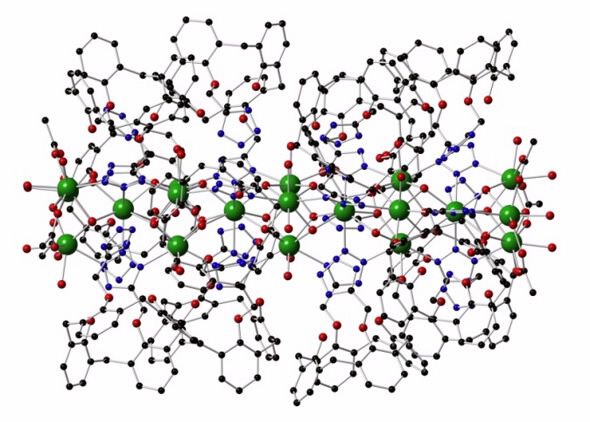A PhD student carrying out research at ANSTO has discovered a simplified way to make a unique class of molecules that has the potential to shift the way in which new nanomaterials are prepared.
The research has produced two scientific papers for prestigious chemistry journals.
The potential applications of these materials are diverse and include synthetic skin, molecular magnets and high-capacity memory storage devices.
Daniel D’Alessio made the serendipitous discovery while working in collaboration with ANSTO LifeSciences on the development of radiopharmaceuticals for diagnosing and treating metastatic cancer. He received a postgraduate research award from the Australian Institute of Nuclear Science and Engineering (AINSE) for the project.
Specifically, D’Alessio examined the suitability of calixarenes functionalised with tetrazoles as potential new ligands for gallium-68 in PET cancer imaging and lutetium-177, which is used in cancer therapeutics.
One of D’Alessio’s first tasks in developing a new radiopharmaceutical was to radiolabel his calixarene ligands with gallium-68, but in attempting to do this, he discovered a completely new way of making very large cluster compounds.

In terms of size, these molecules sit somewhere between proteins and antibodies. The ‘bottlebrush’ cluster (pictured above), as it has been named, has 19 dysprosium atoms at its core and a molecular weight of over 16,000 Daltons (Da).
The discovery was reported in the prestigious Journal of The American Chemical Society in 2014. D’Alessio was supervised by Dr. Max Massi and Prof. Mark Ogden of Curtin University and Dr Ben Fraser of ANSTO Life Sciences.
“We are excited about the new research directions this discovery has opened up. The next step is to further develop ideas into even more general methods to produce clusters with diverse structures and practical applications,” said Fraser.
Althought the calixerene ligands proved ultimately to be unsuitable as radiolabelling molecules, follow up work including photophysics and molecular structure characterisation by D’Alessio has shown ligands with two tetrazoles are much better for making large cluster compounds than ligands with four tetrazoles.
The work is continung at Curtin University with the goal of developing a range of ligands which will enable scientists to control over the size, shape and function of the cluster compound produced.
Published: 28/01/2016


